AI Implementation Strategy KPIs: Why Success Starts Before the First Model
Your AI pilot did not fail. You just never defined what success looked like.
Across industries, AI programs are getting built, funded, and deployed. But why do so many still stall somewhere between proof-of-concept and real business value? In most cases, the flaw lies not in the model’s accuracy, but in the AI implementation strategy itself, specifically, in the absence of clear strategic intent..
Too often, AI implementation strategy focuses on use cases, tooling, or building the model, and not on what the business actually needs to change. Without defined impact or measurable KPIs, efforts start to go astray. Models get deployed but not used. AI becomes a lab project, or a pilot with no path to scalability.
This article, in 3nayan ‘s series on AI implementations, starts the AI Implementation strategy at the end. At Business needs, at ROI and at KPIs that reflect business outcomes, organizational fit, and long-term relevance. If AI is meant to drive real change, in decisions, costs, or workflows, then success must be defined up front. Otherwise, you are building in isolation.
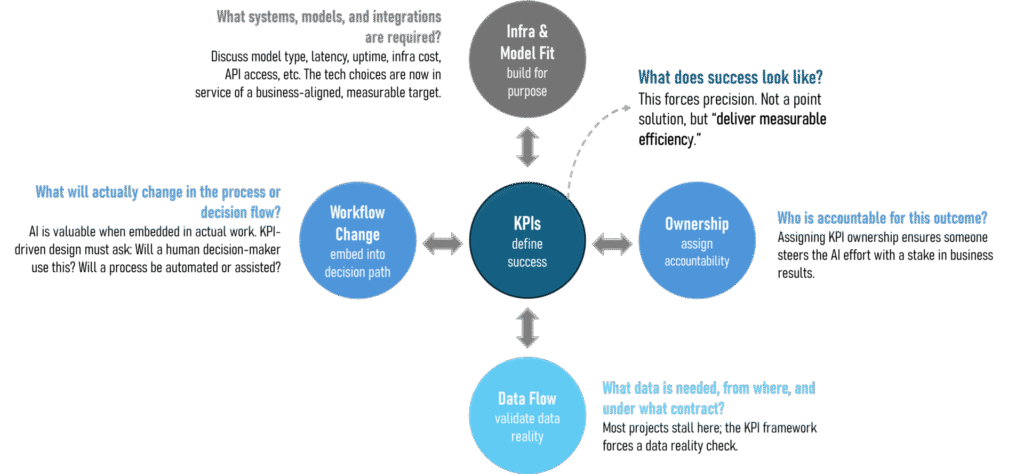
The Strategic Miss: Treating AI Like a Tech Project
Most AI initiatives, that one sees and what case studies show, appear to start with use case definition, assembling a team, building a prototype, and pushing to production. This process sounds structured, and familiar. But, sets the wrong foundation.
AI does not plug cleanly into existing workflows without shifting how decisions are made, who owns the outcome, and how value is created. And yet, many organizations approach it as if it were a point solution; with its own features, UI, and performance benchmarks.
This mindset leads to misplaced focus. Teams obsess over training metrics, model packaging, and demo readiness. What they miss is the more strategic question: how will this AI system create business value, and where does it fit into the enterprise operating model?
When AI is treated like a tech deliverable, it often ends up working well in isolation — but nowhere else. It functions. It’s even accurate. But no one owns it, no one integrates it, and no one measures what it is actually doing for the business.
-
 The 98% Lie: Why Scaling AI Pilots Will Fail (And It’s Not the Reason Your Consultants Told You)
The 98% Lie: Why Scaling AI Pilots Will Fail (And It’s Not the Reason Your Consultants Told You) -
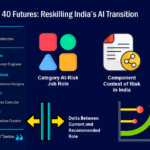 40 Jobs, 40 Futures: Mapping India’s AI Risk and Reskilling Pathways
40 Jobs, 40 Futures: Mapping India’s AI Risk and Reskilling Pathways -
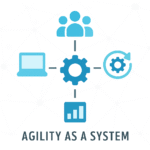 Agility in Enterprise Transformation: Why Maturity Matters More Than AI
Agility in Enterprise Transformation: Why Maturity Matters More Than AI -
 Agility at Scale: Why CEOs Must Think Like Elephants, Hummingbirds, and Neural Networks
Agility at Scale: Why CEOs Must Think Like Elephants, Hummingbirds, and Neural Networks -
 AI Workforce Disruption: How Leaders Can Measure Readiness and Build Strategy
AI Workforce Disruption: How Leaders Can Measure Readiness and Build Strategy
What Should Have Come First — Strategic Intent, Then KPIs
Before any AI model is built, there should be a clear answer to a more fundamental question:
What business priority is this meant to serve?
In most organizations, AI projects start with capability, not the business need. A model gets built because the building components exist. But business imperatives like cost reduction, fraud minimization, faster underwriting, or customer churn prevention are rarely framed with precision. That is the first miss.
The second is strategic alignment. Even when there is a stated objective, it is not always connected to to transformation goals, product strategies, or P&L levers. AI gets treated as an innovation layer, not a lever inside the strategy.
And then comes ROI linked directly to actual business value. The questions which should get asked:
- What are we trying to improve, reduce, or enable?
- Who benefits, and how will we know?
- What does “success” look like after deployment?
This is where KPIs should come in, not as reporting metrics, but as design tools. KPIs should define what matters and anchor expectations. And they give implementation teams something most AI projects lack: direction.
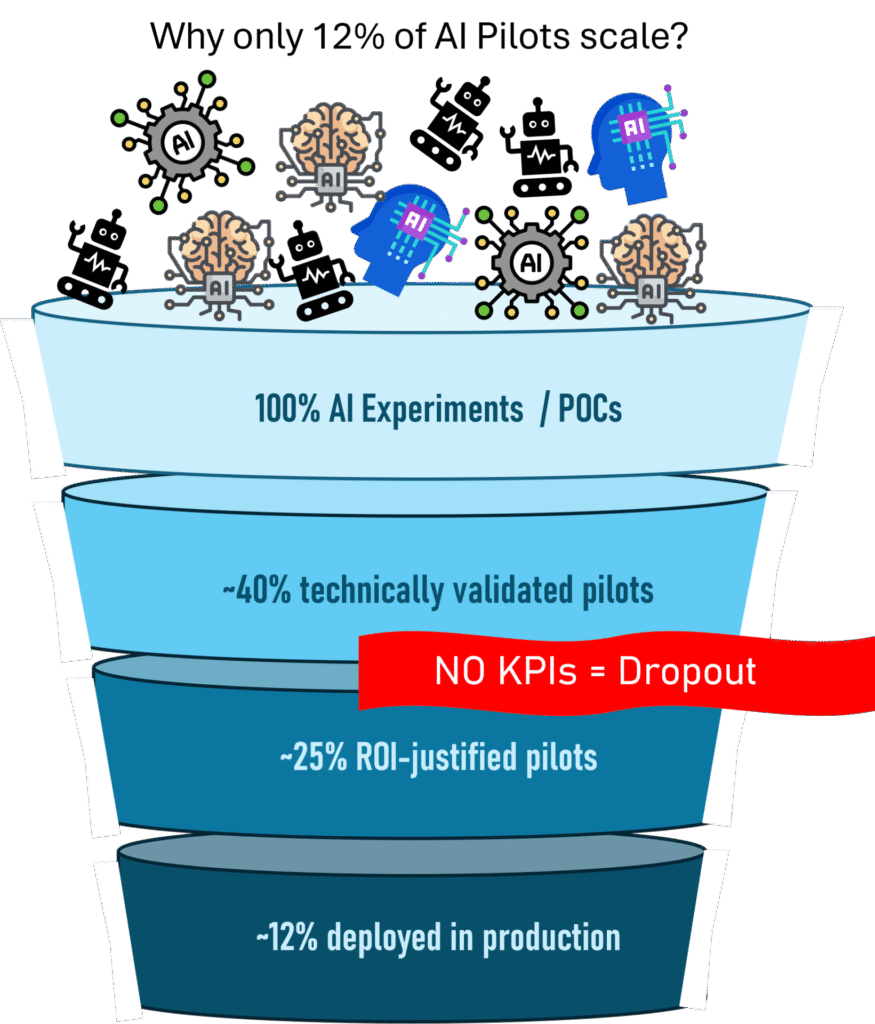
When Mastercard’s AI Worked, and Still Failed
Introducing the Framework
Have you noticed, that when AI projects stall, teams look backward, into the code, the data, the devsecops pipeline or even the training pipeline. But by then, the real problem is usually baked in. The strategy was never grounded in value.
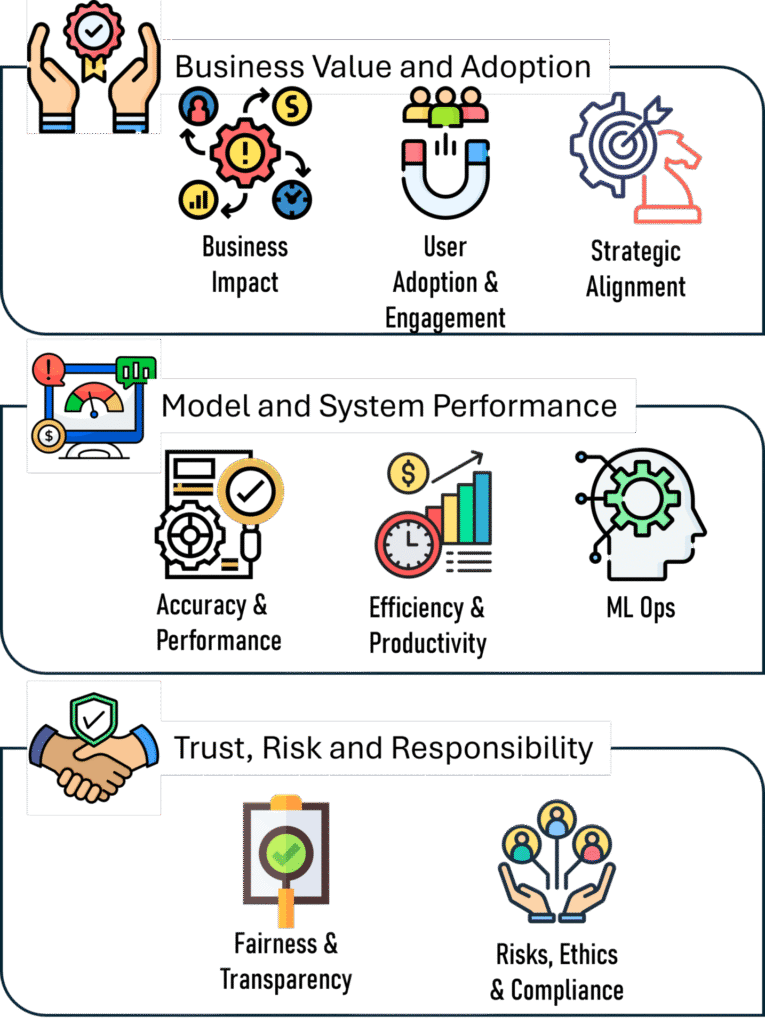
What is required is a KPI-led framework for AI implementation strategy. Not to track what has already happened, but to define what needs to happen, before anything else has started. Such a framework needs to cover how AI systems will integrate into business processes, how they align with organizational priorities, and how their value will be measured over time. It is a strategic lens to the success of your AI implementation.
At the center, of 3nayan’s framework, are eight categories of KPIs which span performance, productivity, adoption, alignment, and risk. Each one maps to a question that executives, product owners, or risk leaders need answered before scaling a model. These are decision levers, and each of them need the lucidity before a single model goes live.
Conclusion – Begin Where the Value Ends Up
Most AI initiatives do not fail because the models are wrong. They fail because no one defined “success”.
If your implementation strategy begins with tooling, data pipelines, or model architectures, you are already several steps removed from value. What the business needed to change, is what matters, and what needs to be measured.
Strategic KPIs are not a reporting layer, nor something to be defined after implementation. They are the starting point. They shape what you build, how you deploy, and whether your AI is adopted or abandoned.
AI at scale is not a technical challenge. It is an alignment challenge. And alignment only happens when success is defined up front, not inferred later.
In our future posts, we will break down the eight KPI categories and the enterprise questions they are designed to answer — from trust and adoption to ROI and accountability.
Because if you want to scale AI, you do not need better models. You need a better definition of success.
If you are thinking about AI based transformation, or larger scale AI implementations, talk to us.